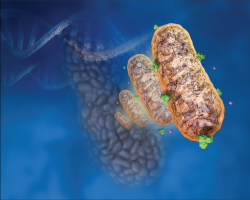
A team led by Frank McCormick, Ph.D., FRS, D.Sc. (Hon), RAS National Program Advisor at the Frederick National Laboratory for Cancer Research and professor emeritus at UCSF Helen Diller Family Comprehensive Cancer Center, has found a new vulnerability in pancreatic cancer and revealed a potential strategy for combating one of the most treatment-resistant malignancies.
The researchers have demonstrated that a small molecule called CB-839, a glutaminase inhibitor, makes KRAS-mutant pancreatic tumours susceptible to a chemotherapy called gemcitabine. (A glutaminase inhibitor is a compound that disrupts metabolic interactions called glutaminolysis.)
The early preclinical study was conducted under the auspices of the National Cancer Institute RAS Initiative and published in the journal Cancer Research.
There are few effective treatments for pancreatic cancers - 95 percent of which harbour a mutation in RAS proteins, like KRAS - and survival rates remain low.
As of early January, the National Cancer Institute estimated that only one in 10 people with pancreatic cancer survives for five years after starting treatment.
Gemcitabine is a frontline chemotherapy, but changes in the metabolism of cancer cells make pancreatic tumours resistant to it over time.
By adding CB-839, the team found that it was possible to prevent glutaminolysis and, therefore, this resistance in pancreatic cancer cell lines.
“RAS-mutant pancreatic cancers consume more glutamine, so we just blocked that consumption because they eat more. So, you block that, and you see the existing chemotherapy is working fine,” said Suman Mukhopadhyay, Ph.D., postdoctoral fellow in the RAS Initiative and first author on the study.
“This signifies the impact of glutaminase inhibitors in combination with chemotherapy. In addition, we have shown that normal cells will not be affected by this combination treatment, so we’re optimistic about this therapy,” he added.
Through a collaboration with Serguei Kozlov, Ph.D., principal scientist in the National Cancer Institute–Frederick National Laboratory Center for Advanced Preclinical Research, the team tested the combination of CB-839 and gemcitabine in mouse models of pancreatic cancer.
The mice’s tumours drastically shrank, and the mice appeared to experience insignificant side effects from the treatment, suggesting that it may be safe in humans.
“In this paper, we suggest a mechanism for making pancreatic cancers more sensitive to chemotherapy by reversing the effects of KRAS on cellular metabolic pathways, specifically those involving glutamine. Attacking this aspect of KRAS signalling could provide another approach to improving outcomes for patients suffering from this disease,” said McCormick, the study’s senior author.
“Based on the studies in mice, inhibiting the glutamine pathway deprives cancer cells of the energy source they need to proliferate,” added study author Dwight Nissley, Ph.D., director of the Frederick National Laboratory’s Cancer Research Technology Program and the national lab’s senior scientist in the RAS Initiative.
The team hopes to confirm the findings by using genetically modified mouse models that more closely resemble human cancers.
If those studies succeed, the combination treatment will be on track for clinical trials.
The researchers are also planning further experiments to study RAS proteins’ biological interdependencies as well as several chemotherapies that may restrict tumour growth.
“Our research is focused on finding multiple targets in KRAS cancers and weakening them so they are vulnerable to chemotherapy,” Nissley said.
Toward New Treatment Strategies
Mukhopadhyay conceived the study after a chat with McCormick, his postdoctoral mentor, about recent cancer metabolism publications.
The duo had been intrigued by a pair of studies showing that mutated RAS proteins activate a protein called NRF2 in pancreatic cancer and that, in lung cancer, certain mutated cells are highly sensitive to glutaminase inhibitors.
As a trainee in the emerging field of tumour metabolism, Mukhopadhyay saw an opportunity to connect the dots.
He had long been interested in how cancer cells use metabolic reactions, like those involving KRAS and NRF2, to sustain themselves and grow over time.
With colleagues, he probed the relationship in pancreatic cancer, demonstrating that advanced, treatment-resistant pancreatic tumours with a KRAS mutation were correlated with higher levels of NRF2.
The findings confirmed the connection between NRF2 and the cancer’s resistance to chemotherapy.
From there, the team pinpointed glutaminolysis, a metabolic process driven by NRF2, as the culprit.
“Then we used several glutaminase inhibitors to block glutamine utilisation, and then we saw that cells were going back to being sensitive to chemotherapy,” Mukhopadhyay said.
That was the critical moment. However, while many glutaminase inhibitors would work, the team knew they needed one that wouldn’t be toxic or make patients sick.
They zeroed in on CB-839, which is safe and currently being used in human clinical trials.
With CB-839 and gemcitabine both in hand, they were able to complete the successful tests in the mice.
The study represents the first time scientists have observed a cooperative effect between chemotherapy and glutaminase inhibitors in pancreatic cancer.
In light of this initial success, the team has hope for continued advances in future studies.
At the Frederick National Laboratory, Debanjan Goswami, Pavan Adiseshaiah, William Burgan, Ming Yi, Theresa Guerin, and Serguei Kozlov also contributed to the study.
By Samuel Lopez
Image: Al Kane
We are an independent charity and are not backed by a large company or society. We raise every penny ourselves to improve the standards of cancer care through education. You can help us continue our work to address inequalities in cancer care by making a donation.
Any donation, however small, contributes directly towards the costs of creating and sharing free oncology education.
Together we can get better outcomes for patients by tackling global inequalities in access to the results of cancer research.
Thank you for your support.